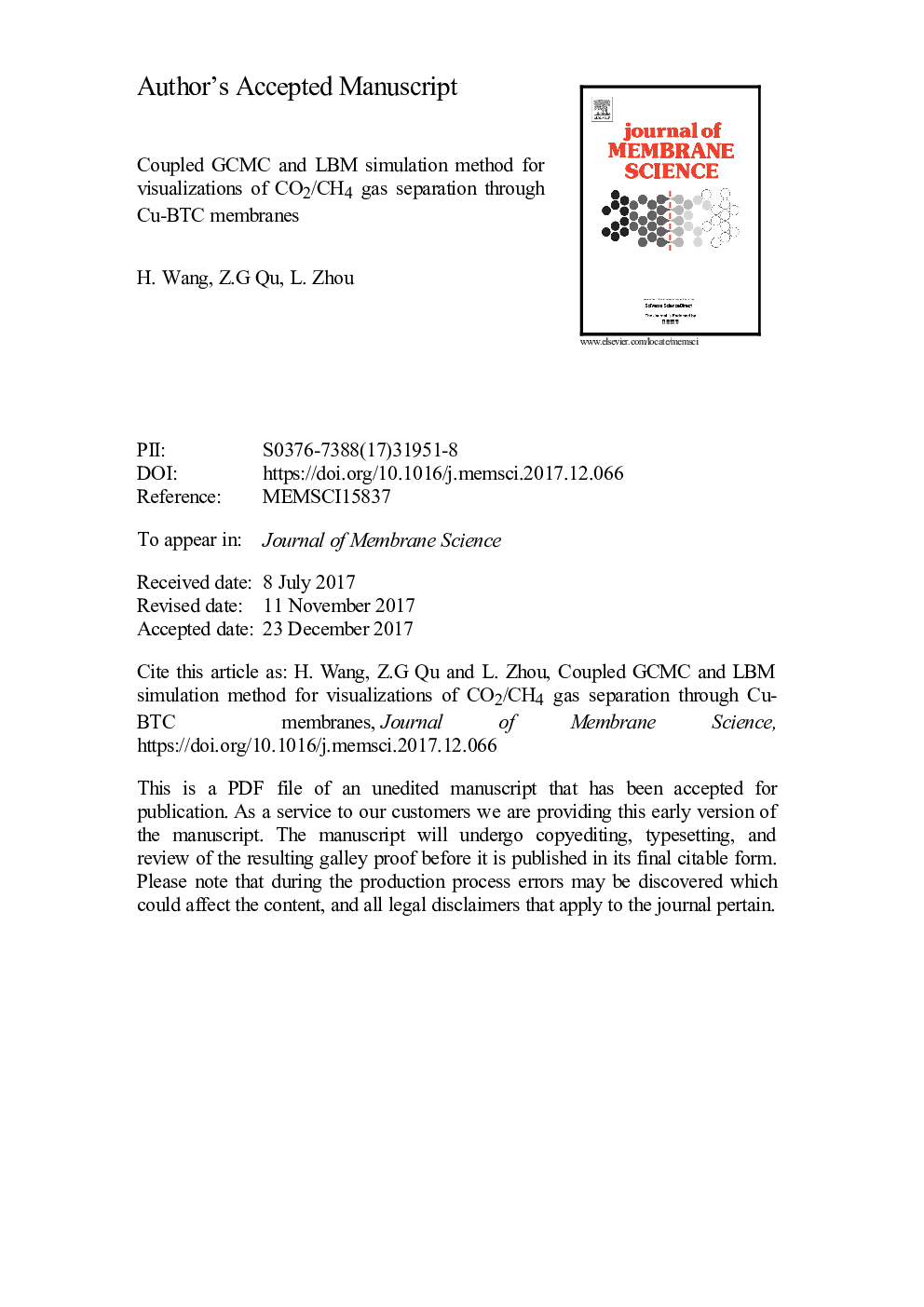| Article ID | Journal | Published Year | Pages | File Type |
|---|---|---|---|---|
| 7020166 | Journal of Membrane Science | 2018 | 54 Pages |
Abstract
A fully dynamic model for mixture gas separation is built in Cu-BTC membranes. A multi-scale method that couples the lattice Boltzmann method with grand canonical Monte Carlo (GCMC) is proposed to investigate the mass transfer process of CO2/CH4 mixture gases in Cu-BTC membranes. The convection and diffusion in the interparticle flow field and the intraparticle diffusion and adsorption in the particle interior are simultaneously considered. The membrane morphology is reconstructed by a sphere-based simulated annealing method. The effects of membrane porosity and particle size on the mass transfer and selectivity of CO2/CH4 mixture gases are predicted. Results show that the selectivity of CO2/CH4 is mainly determined by interparticle and intraparticle mass transfer resistances. Meanwhile, the time of saturation adsorption for CO2 and CH4 both decrease with an increase in porosity but decreases for CO2 and increases for CH4 with an increase in particle size. The selectivity of CO2/CH4 in Cu-BTC membranes decreases with an increase in porosity and particle size. Therefore, membranes with small porosity and particle size should be utilized. Compared with the traditional binary GCMC and ISAT methods based on saturation adsorption, the proposed coupled method is closer to the physical essence of the process because it considers dynamic competitive adsorption. The present method can be helpful in the design of efficient metal-organic framework (MOF) membranes.
Related Topics
Physical Sciences and Engineering
Chemical Engineering
Filtration and Separation
Authors
H. Wang, Z.G. Qu, L. Zhou,
